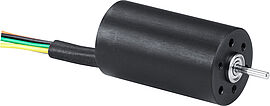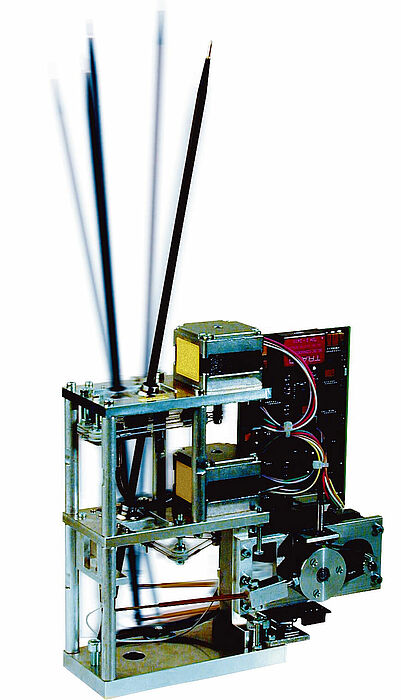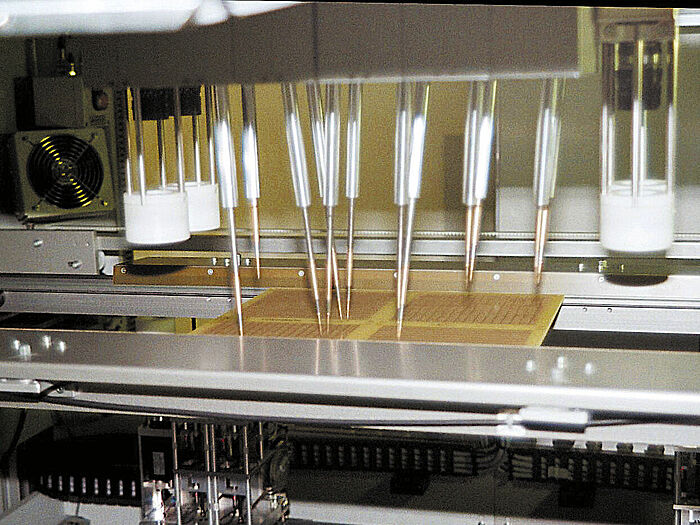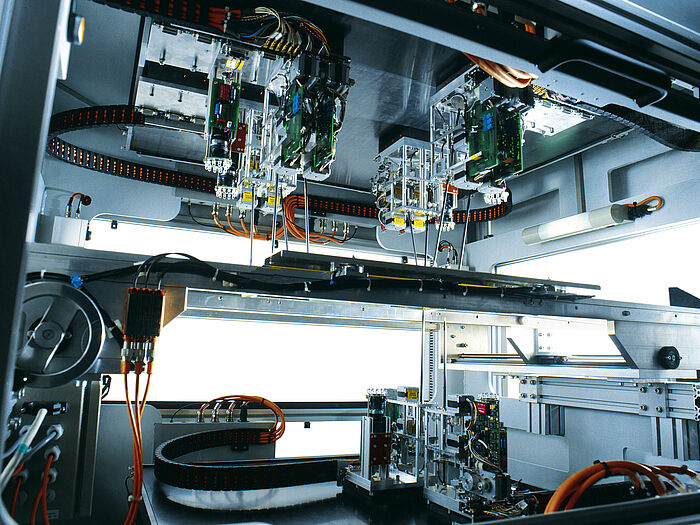Testing small series and prototypes of large, complex backplanes with hundreds of connectors or components electrically at low cost is an enormous technical challenge. Scorpion Technologies, a Hamburg-based company, has taken on this challenge with its latest generation of flying-probe testers. The Flying Scorpion is a multifunctional backplane testing system with which precision tests can be performed at high speed. In conjunction with the same manufacturer's CAD conversion program it is even possible to test very large backplanes with high-density connectors automatically the same day the CAD data is made available.
Flexible testing options: double sided, three-dimensional, and multifunctional
The basic mode of operation of these flexible testing systems is easy to understand. First of all, planar drives position the moving joystick probes over the test pads. The so-called shuttles accommodate 2 to 5 probes, depending on the configuration. The tests can be performed on both sides, i.e. both on the top and base of the backplane. With the help of a sophisticated three-axis positioning system, the test needles or cups can be moved freely along all three axes and even move to inaccessible test pads laterally at variable, exactly definable angles. The relevant test coordinates can be calculated on the basis of the CAD data and utilized for positioning. On all three axes positioning is conducted very precisely in order to reach even extremely small test pads. Consequently, reliable contact can even be made with DIN connectors, VHDM or HMZD connectors, and DIP connectors. On the X-axis and Y-axis the accuracy is ± 10 µm, while on the Z-axis it is ± 100 µm. In order to guarantee this high positioning accuracy, the drive systems used on the axes of the flying probes have to meet high demands. For instance, they should preferably operate without backlash. At the same time, operation within a moving system calls for lightweight drives that nevertheless have to provide a comparatively high level of power. After all, the flying probes are designed for up to 12 tests per second. Other important requirements for the company's application were maintenance-free operation, a long service life, and userfriendly servicing in order to ensure that the testing systems operate smoothly.
Drives for flying probes – small, light, and powerful
The company ultimately decided in favor of drive solutions from the standard range supplied by micro-motor specialists FAULHABER. The three axes of each moving test probe feature brushless servo drives from Series 1628. The rare-earth magnet of the rotor and the FAULHABER skew winding provide these motors with a high level of dynamic response and power in a relatively small space. At rotary speeds of up to 40,000 rpm, an output power of 11 W, and a torque of 2.6 mNm these drives, which have a diameter of 16 mm, are a mere 28 mm long and weigh only approx. 30 g. A finely laminated core minimizes losses due to eddy currents in the stator. The efficiency of the drives is therefore comparatively high at approx. 70%. The drives operate with virtually no wear; their service life is only ever restricted by the service life of the ball bearings and electronic components used. If the motor is operated at the figures recommended on the data sheet, service life can be expected to reach over 10,000 operating hours on average. The speed reduction required for the application is provided by a spindle directly attached to the drive.
Magnetic pulse encoder with small footprint
Knowing the actual position of the motors is an essential prerequisite for precision positioning. Here, too, the manufacturer's "set of modules" provided the perfect solution. In the axis positioning systems used on the Flying Scorpion the current positions are detected at each motor by a magnetic pulse encoder that emits 256 pulses per revolution. The pulse encoders are comprised of a magnetic annular gear attached to the rotor and a hybrid circuit. The sensor integrated into the hybrid circuit converts the magnetic field differences between the top land and the root of the tooth into electrical signals that are processed by an integrated circuit. At the outputs there are then two phase quadrature rectangular-pulse signals available, which are then processed by the system control of the flying probes. The simply designed, robust pulse encoders are extremely compact and can be directly mounted on the motor. They are fitted to the free end of the motor shaft and fixed with three screws. They only extend the drive by approx. 10 mm. In the application described, the connections between the pulse encoder and the motor are routed in a common ribbon cable, which simplifies electrical connection considerably. Mechanical assembly is also simple and practical. All that has to be done is to attach the complete drive units to the shaft with three screws at each point. FAULHABER motion control technology therefore represents a key component in the new testing systems that use precision high-speed flying probes.
Products




